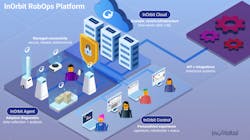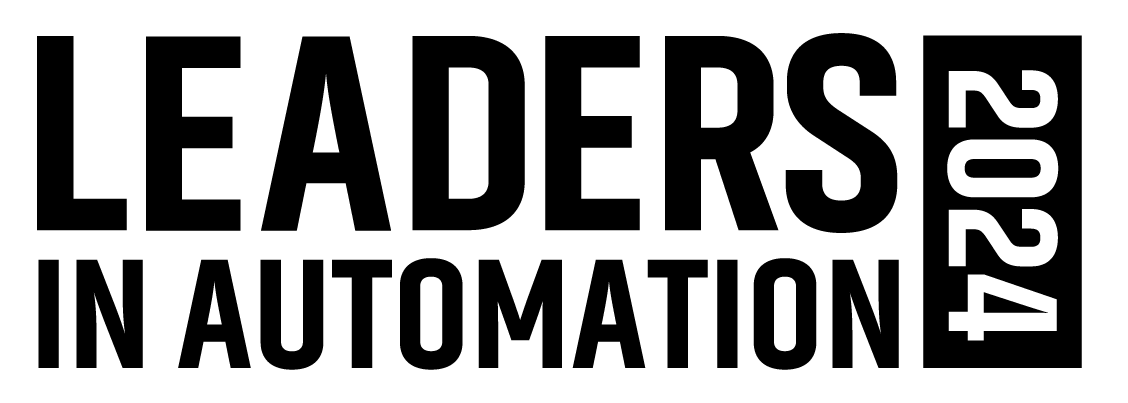Connecting the cloud to the factory floor, specifically to industrial control systems (ICS), has been one of those taboo topics for many plant managers. The problem is twofold. First, it’s a cybersecurity risk. Second, control programs require sub-second responsiveness, which shouldn’t—and really can’t—be performed from the cloud.
“It’s a safety concern,” notes Josh Eastburn, director of technical marketing at Opto 22. “We need systems to be responsive in case things trend in the wrong direction. So people are right to be skeptical about moving certain applications to the cloud. It can be done. The question is, should it be done?”
When it comes to controlling mission critical real-time processes, should it be done? The answer is a resounding “no.” Despite this, manufacturing technology suppliers are finding more ways to couple cloud-based applications with factory automation. Here’s a summary of a just a few of the recent announcements from some of the biggest ICS suppliers:
In April, Siemens and Google Cloud announced a new cooperation to optimize factory processes and improve shop floor productivity. The two companies will integrate Google Cloud’s data cloud and artificial intelligence/machine learning (AI/ML) technologies with Siemens Digital Industries’ factory automation portfolio to help manufacturers harmonize their factory data, run cloud-based AI/ML models on top of that data, and deploy algorithms at the network edge. According to the companies, this enables applications such as visual inspection of products or predicting the wear-and-tear of machines on the assembly line.
As an example, at a Siemens manufacturing plant where industrial PCs are produced, the company is using visual inspection to help workers package the products. “It is based on a camera and a model trained by Google Cloud,” said Axel Lorenz, vice president of factory automation control at Siemens Digital Industries. “By doing so, we help our workers to package the right components completely and that saves time, saves rework, and it increases customers’ satisfaction.”
In June, Rockwell Automation announced it will acquire Plex Systems, a provider of a single-instance, multi-tenant software-as-a-service (SaaS) manufacturing platform. The move is an effort to expand Rockwell’s industrial cloud software offerings for manufacturing execution systems (MES), supply chain planning, and quality management capabilities across discrete, hybrid, and process industry segments. That deal followed Rockwell’s acquisition of Fiix Inc., a supplier of cloud-based AI-enabled computerized maintenance management systems (CMMS).
And, in August, Honeywell announced an agreement with Microsoft to become a key provider of manufacturing software powered by Microsoft’s Azure cloud that is geared toward increasing productivity, safety, and sustainability. Targeting oil and gas, mining, and process industries, Honeywell and Microsoft will work to migrate seven on-premises Honeywell applications to Microsoft Azure, enhance the capabilities of Honeywell Forge, a SaaS-based enterprise performance management application suite, and provide Microsoft cloud-based industrial software. The goal is to deliver industrial SaaS applications that will help customers address critical needs, including managing supply chain fluctuations, reducing carbon emissions, and meeting the needs of an aging workforce—all by leveraging cloud computing technology to make data-driven decisions in near real-time.
These announcements are indicative of a larger trend to move more industrial applications to the cloud, a direct result of digitalization efforts underway as manufacturers innovate operations with Industry 4.0 capabilities.
“Companies across industries are looking to upgrade production systems…and one solution is a modern, cloud-based [system] that is easy to use and maintain,” said Rockwell Automation chairman and CEO Blake Moret during the ROKLive event in June.
And, while most of the cloud-based industrial offerings are focused on data collection for analysis and visualization or remote monitoring for maintenance, more and more, the industry is seeing examples of how the cloud can power “as-a-service” offerings, SCADA systems, engineering tools, and even off-premises robot management.
Rethinking the cloud
While it’s not advisable to control production equipment from the cloud, there are tools available to securely connect an on-premises control system to cloud-based systems. One such tool is the MQTT (message queueing telemetry transport) publish-subscribe protocol in which a central server, called a broker, sends information from the plant floor devices to which it is connected only when data generated by those devices change. Using MQTT, multiple software systems—ranging from enterprise resource planning systems to visualization dashboards—can access data from plant floor devices without affecting those systems’ performance since the systems requesting data from the devices are connected to the broker and not directly to the devices.
Opto 22’s groov EPIC (edge programmable industrial controller) includes MQTT communication which can connect to a cloud-based SCADA system.
For example, The Waterford Department of Public Works in Michigan recently upgraded its remote telemetry units (RTU) that communicated through licensed radio frequency (RF) transmitters. Now, they use MQTT on groov EPIC. Not only does this new setup remove the data bottleneck and reporting gaps of the old system, but it communicates directly with a cloud-based SCADA system based on Ignition from Inductive Automation running on Amazon Web Services (AWS). Each EPIC uses a certificate authority (CA) signed client SSL to establish a secure broker connection using a cell modem configured to block any traffic not originating from a trusted IP address. Additionally, with MQTT’s device-originating connections, groov EPIC's device firewall in each lift station can be closed entirely to outside connections. They continue to run a legacy SCADA system in parallel to the Ignition MQTT server hosted in an Ohio data center with a snapshot of the same server hosted in an Oregon data center. In this manner, if the system encounters problems, it can be back up and running in 30 minutes or less.
“We make sure the data from the field is a secure end-to-end connection, whether it’s on premises or cloud-based, we get the data there safely and efficiently,” Eastburn said. “And [Waterford] feels they are getting better reliability than before because if they lose the local internet connection, the cell service operates regardless of what happens at the headquarters.”
Like Opto 22, many automation technology suppliers are rethinking the way they approach machine control, especially in the age of the Industrial Internet of Things (IIoT) and the need to unify information technology (IT) and operations technology (OT) and scale applications.
Last year, Bosch Rexroth introduced its ctrlX Automation platform, which runs on Linux and includes a real-time component for the deterministic aspects of machine control. The ctrlX Core, the nucleus of the automation platform, is a Linux-based multicore technology that breaks down the boundaries between functionality, such as the controller, the HMI, the communication channels, etc. “Now you can run everything on the same box in Linux on one processor,” said Allen Tubbs, product manager at Bosch Rexroth.
Linux being open, yet highly secure, opens the door to new types of applications that could eventually include connecting to the cloud—like the ability to run a digital twin of a system in the plant and doing incremental updates on the digital twin which are periodically synched to update the physical system.
Daymon Thompson, Beckhoff Automation’s U.S. software product manager, agrees that the ability to do a file transfer to a controller to update the code, for example, is a good use of the cloud. “We’ve had the ability to do file transfers to update PLC code for a while, but we’ve added other protocols like HTTPS so you can do the entire updating over the cloud remotely.”
Beckhoff also uses MQTT as a central message broker in the cloud to enable all engineering, analytics, and debugging tools to connect with machines. In this case, the cloud could act as a transport mechanism for a machine builder, providing customers with a dashboard of machine health or doing predictive maintenance. Another scenario is to have a machine learning product that runs in the controllers. Machine learning can make predictions locally and send data to a database in the cloud and then periodically reach out every 24 hours or weekly and download a new trained machine module. “If a machine builder wants to collect data from multiple machines and make each machine smarter, that training can be done in the cloud,” Thompson says.
The convenience of the cloud
One of the other big benefits of the cloud is the ability to scale and access information from anywhere. To that end, Beckhoff has a tool called TwinCAT Cloud Engineering, a virtual machine that allows registered users to instantiate and use existing TwinCAT engineering and runtime products directly from the cloud. With access through the Beckhoff website, this cloud-based software allows users to create instances that can connect to physical control hardware over a secure transport channel.
“The idea is that, from anywhere—even sitting in the airport with an iPad—I can pull up a dashboard and start an instance of an engineering workstation in the cloud,” Thompson says. A single instance of TwinCAT Cloud Engineering can connect to multiple controllers allowing for remote machine diagnostics and debugging of PLC programs.
But what if you want to control a fleet of robots from the cloud? There’s a new way to do just that.
InOrbit, a California-based startup offers a secure, cloud-based robot operations (RobOps) management platform. Designed for use with autonomous mobile robots (AMRs) for material handling and inventory management, the technology is bringing a continuous improvement element to the world of autonomous robots, company officials said.
“The idea is you have this fleet of robots—dozens or thousands of robots—how do you keep track of them? How do you keep them operating at full potential, which means solving incidents as they occur; and how do you optimize operations over time to get the highest return on the investment?” asked InOrbit CEO Florian Pestoni.
InOrbit’s answer to these questions is its platform with bi-directional connectivity to the cloud to process massive amounts of data to adjust to changing conditions on the robots, the network, and the cloud.
The technology itself is a small piece of software that runs on each robot and collects data which is sent to the cloud through a secure channel. A multi-cloud infrastructure is set up for real-time data collection aggregated across many sites. A dashboard personalized for each role (executives, operations, engineers) provides the relevant information for each user’s role. An executive might want a view of the overall fleet and KPIs in each location. Operations might focus on robots having problems and jump in to fix them—to the point of drilling down to see through the “eyes of the robot,” including seeing events through a history of the robot to understand what’s happened in the past. And an engineer or roboticist will want to see more detailed technical data about robot itself.
Integration is also enabled with onsite systems. “An end user might want to integrate this with internal systems, like a warehouse management system or ERP in the factory,” Pestoni explained. “You can use this integration to send commands to robots to [for example] deploy it to [a different] part of the factory because there’s delivery of engine parts.”
InOrbit aims to solve problems around productivity, labor shortages, and the need for resilience and flexibility related to omnichannel fulfillment. “The power of the cloud allows you to make changes on-the-fly, even at an individual robot level, without having to wait for the robot software to be updated,” Pestoni said, noting that this ability is also driving interest in managing robots at scale.
Whether its managing multiple machines or a fleet of robots, the need to scale will drive more development in the cloud-based industrial automation. “It may be a few years before we see broader adoption, but we are laying the foundation for this,” said Opto 22’s Eastburn.
Leaders relevant to this article:


